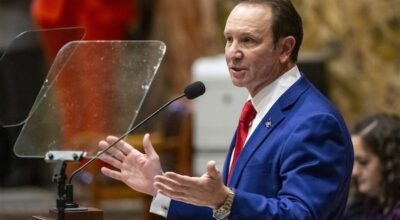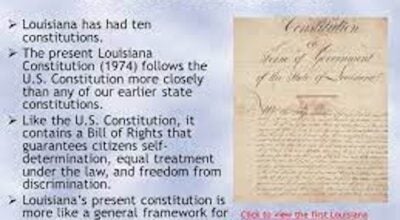Electoral College isn’t scam
Published 7:32 pm Sunday, August 25, 2019
Anyone who calls the Electoral College a scam shows a complete misunderstanding of the U.S. Constitution. The latest is U.S. Rep. Alexandria Ocasio-Cortez, D-N.Y., who also said the college has a “racial injustice breakdown” that undermines the votes of people of color. That is another stretch of her imagination.
Attacks on the Electoral College aren’t new, but they have become increasingly bitter since Democrat Hillary Clinton failed to win the 2016 presidential election. One of the problems is the fact that many Americans don’t understand exactly how the Electoral College works.
Fairvote.org notes that the Electoral College was established by Article 2, Section 1, of the U.S. Constitution, and was later improved by the 12th and 23rd Amendments. The names of presidential and vice presidential candidates are on the ballot, but voters are actually electing a slate of electors that represent those candidates in each state. Nationwide, the 538 electors from the states combine to become the Electoral College.
Each state is allocated electors equal to its number of members of Congress. Louisiana, for example, has eight electors because of its two U.S. senators and six U.S. representatives. Political parties in each state name those electors who represent that party’s presidential and vice presidential nominees.
Only 29 states require their electors to vote as they have pledged to do, and FairVote said it is believed that wouldn’t stand up in a court challenge. The other electors are free agents, but there have been few defectors.
After the election, 48 states and the District of Columbia say the party that wins the most votes in each state gets all the electors. Maine and Nebraska allocate their electors according to who won each congressional district, plus two at-large electors who cast their votes for the candidate who wins the state’s popular votes. Other states could do the same, but have resisted the change.
Electors vote in December and their votes are sent to the president of the U.S. Senate where they are opened on Jan. 6. Since there are 538 electoral votes, it takes a majority of 270 electoral votes to win the election (one more than an even split of 269).
A National Affairs report in the winter of 2018 written by Allen Guelzo, director of Civil War Era Studies at Gettysburg College, said there have been only five occasions when the closely divided popular vote and Electoral College vote “failed to point in the same direction.”
Three of those five occasions weren’t entirely the fault of the Electoral College. The 1824 presidential election was decided by the U.S. House of Representatives because no candidate won a majority of the Electoral College vote.
The first time a candidate won the electoral vote but not the popular vote was in 1876. However, Florida, Louisiana and South Carolina sent two sets of electoral votes to Congress, and a congressional election commission ended up deciding the outcome.
In 2000, Democrat Al Gore edged out Republican George W. Bush in the popular vote, but contested votes in Florida sent the issue to the U.S. Supreme Court. Its ruling on the Florida vote gave the election to Bush with an Electoral College majority.
In 1888, incumbent Grover Cleveland won the popular vote by less than one percentage point, but Benjamin Harrison won the presidency with 233 electoral votes to 168 for Cleveland. In 2016, President Trump got 2.8 million fewer votes than Democrat Hillary Clinton, but he won the votes of 30 states and the electoral vote 304 to 227.
The Clinton popular vote margin can be attributed to the fact that populations are concentrating in large metro areas, and many who live there are Democrats. The outcome gave renewed emphasis on doing away with the Electoral College and going to a popular vote.
A number of states have joined the National Popular Vote (NPV) Interstate Compact, but going to a popular vote won’t happen until the electoral votes of participating states totals 270.
Hillsdale College, a private college in Hillsdale, Mich., in its June 2019 “Imprimis” published “The Danger of the Attacks on the Electoral College.” The report was adapted from a speech delivered by Trent England, director of Save Our States and executive vice president of the Oklahoma Council of Public Affairs.
England explains why changing the current system would be difficult. He said anti-Electoral College amendments with bipartisan support in the 1950s and 1970s failed to receive the necessary two-thirds votes in Congress they needed to be sent to the states for consideration.
“Likewise today, partisan amendments will not make it through Congress,” England said. “Nor, if they did, could they win ratification among the states.”
What is particularly troubling about all of this anti-Electoral College controversy is its attack on a U.S. Constitution that has survived the test of time and only been amended 27 times. The current confusion about our country’s history also makes you wonder whether our schools are still teaching American history and government courses.
ELECTORAL COLLEGE — Too many Americans don’t understand how the Electoral College works to elect presidents and vice presidents. However, those who call the college a scam are extremely misinformed.





